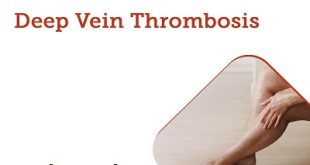What is a Deviated Septum?
A deviated septum is a condition in which the nasal septum (the bone and cartilage that divide the nose in half) is crooked, making one nasal passage smaller. If severe, breathing through the nose can be difficult. Most people naturally have some deviation – only people with severe deviations need treatment.
What causes a Deviated Septum?
An injury to the nose can cause a deviated septum. Nasal injuries may occur due to:
- Sports
- Falls
- Car accidents
- Getting hit in the nose during an accident or fight
A deviated septum may also be congenital, or present at birth. The deviation may be from a difficult birth or connective tissue disease.
It may also be a result of normal development. As the nose grows, the septum also grows and can sometimes grow towards one side. This is typically the most common reason to have a deviated septum.
Risk factors
For some people, a deviated septum is present at birth — occurring during fetal development or due to injury during childbirth. After birth, a deviated septum is most commonly caused by an injury that moves your nasal septum out of place. Risk factors include:
- Playing contact sports
- Not wearing your seat belt while riding in a motorized vehicle
Symptoms
Most septal displacements result in no symptoms, and you may not even know you have a deviated septum. Some septal deformities, however, may cause the following signs and symptoms:
- Obstruction of one or both nostrils. This blockage can make it difficult to breathe through the nostril or nostrils. You may notice this more when you have a cold or allergies that can cause your nasal passages to swell and narrow.
- Nosebleeds. The surface of your nasal septum may become dry, increasing your risk of nosebleeds.
- Facial pain. There is some debate about the possible nasal causes of facial pain. A possible cause of one-sided facial pain could be a severe deviated septum in which surfaces within the nose touch and cause pressure.
- Noisy breathing during sleep. A deviated septum or swelling of the tissues in your nose can be one of the many reasons for noisy breathing during sleep.
- Awareness of the nasal cycle. The nose alternates between being obstructed on one side and then changes to being obstructed on the other. This is called the nasal cycle. Being aware of the nasal cycle isn’t typical and can indicate nasal obstruction.
- Preference for sleeping on a particular side. Some people may prefer to sleep on a particular side to optimize breathing through the nose at night if one nasal passage is narrowed.
Complications of Deviated Septum
A severely deviated septum causing nasal blockage can lead to:
- Dry mouth, due to chronic mouth breathing
- A feeling of pressure or congestion in your nasal passages
- Disturbed sleep, due to the unpleasantness of not being able to breathe comfortably through your nose at night
Diagnosis of Deviated Septum
Medical History
Your doctor may ask a variety of questions about your current and past health, including when you first noticed that breathing through the nose was difficult.
He or she may also ask if you had an injury to the nose recently or in the past, if you’ve been tested for or diagnosed with allergies, or if you have frequent sinus infections or nosebleeds. Tell your doctor if breathing is difficult in one or both nostrils, or if breathing through the nose is more difficult at night.
Physical Exam
During a physical exam, doctors thoroughly examine the internal and external structures of your nose. You may be asked to breathe in deeply through the nose or to take short, quick inhalations. This allows doctors to assess any asymmetry or instability of the cartilage that forms the nasal passages.
Doctors also take a close look at the inside of your nasal passages using a light and a hand-held instrument called a speculum. The speculum is used to gently widen the nostrils, so doctors can see the interior tissues and bone structure of the nose, including the septum.
Fiber-Optic Nasal Endoscopy
Fiber-optic nasal endoscopy is a diagnostic exam that provides a detailed view of the nasal passages. Doctors use endoscopy to determine the position of the septum and confirm whether any other structural damage or abnormalities contribute to obstructed breathing.
To perform this procedure, the doctor first sprays the nose with a decongestant to open up the nasal passages and a local anesthetic solution to reduce any discomfort during the procedure. The doctor then inserts a thin fiber-optic instrument called an endoscope through each nostril.
This procedure takes only a couple of minutes and takes place in your doctor’s office.
CT Scans
If your nose is seriously injured or broken, doctors typically use CT imaging to assess the extent of damage to the nose and face.
CT scans use X-rays to create computerized two- and three-dimensional images of bones, cartilage, and other nasal structures. This enables doctors to examine the nose from a variety of angles.
Treatment of Deviated Septum
Treating a Deviated Septum with Septoplasty
Septoplasty is a reconstructive plastic surgery performed to correct an improperly formed nasal septum. The procedure is performed entirely through the nostrils. During the procedure, badly deviated portions of the septum may be removed entirely or they may be readjusted and reinserted into the nose.
In addition to correcting a deviated nasal septum, septoplasty may also be performed to correct other problems such as cleft defects that affect the nose and nasal cavity, and a fistula in the maxillary sinuses.
About the procedure:
Septoplasty may be performed with the traditional open surgical technique from inside the nose. When open surgery is performed, small scars will be located on the base of the nose, but they usually are not noticeable. Scarring is not visible when internal surgery is performed. Depending on the severity of the deviation, septoplasty may be performed in:
- A surgeon’s office
- An outpatient surgery center
- A hospital – outpatient
- A hospital – inpatient
The surgeon will provide guidelines for resuming normal activities. Many patients are up and around within a few days and able to return to school or sedentary work in a week or so.
Short-term side effects of surgery may include:
- Splint applied to nose to help maintain new shape
- Nasal packs or soft plastic splints may be placed in nostrils to stabilize septum
- Face will feel puffy
- Nose may ache
- Dull headache
- Swelling around the eyes
- Bruising around the eyes
- Small amount of bleeding in first few days
- Small burst blood vessels may appear as tiny red spots on the skin’s surface
Healing is a slow and gradual process. Some swelling may be present for months, especially in the tip of the nose. Final results of nasal surgery may not be apparent for a year or more.
What are the complications associated with nasal surgery?
Individuals vary greatly in their anatomy and healing ability, and the outcome is never completely predictable. Complications may occur, including:
- Infection
- Nosebleed
- Reaction to the anesthesia
Medication for Deviated Septum
Although the position of a deviated septum can only be corrected by a surgical procedure, many of the symptoms associated with a deviated septum, such as congestion, can be alleviated with medication.
To clear the nasal passages and help you breathe more easily, Otolaryngologists—also known as ear, nose, and throat, or ENT, doctors—may recommend an over-the-counter nasal rinse or decongestant. For more severe congestion, they may prescribe a corticosteroid spray.
Nasal Rinses
Nasal rinses, also called sinus washes, can be done using a neti pot, bulb syringe, or other irrigation device. These small, handheld devices are filled with salt water, also called saline, that is then squirted or poured into the nose to rinse the nasal cavity. This washes away excess mucus, which may relieve symptoms caused by a deviated septum, such as a stuffy or runny nose or postnasal drip.
Decongestants
Decongestant medications contain ingredients that reduce swelling in the nasal passages and sinuses. These medications may alleviate symptoms such as stuffiness, facial pain or pressure, and headache. Decongestants can be applied as a nasal spray or taken by mouth.
Corticosteroid Sprays
Corticosteroid medications have powerful anti-inflammatory effects and can reduce swelling in the tissue that lines nasal passages and sinuses, making breathing easier even if a septum is deviated. Doctors may recommend using a steroid nasal spray once daily.
If you experience frequent sinus infections and have a deviated septum, your doctor may explore additional medical or surgical treatment options to alleviate sinus symptoms.
Can I prevent a Deviated Septum?
Some people are born with a deviated septum. It can’t be prevented.
If you don’t have a deviated septum at birth, you can take steps to reduce your risk of injury. You can protect your nose by:
- Using a face mask or helmet during sports
- Wearing your seat belt
- Avoiding high-contact sports
 Diseases Treatments Dictionary This is complete solution to read all diseases treatments Which covers Prevention, Causes, Symptoms, Medical Terms, Drugs, Prescription, Natural Remedies with cures and Treatments. Most of the common diseases were listed in names, split with categories.
Diseases Treatments Dictionary This is complete solution to read all diseases treatments Which covers Prevention, Causes, Symptoms, Medical Terms, Drugs, Prescription, Natural Remedies with cures and Treatments. Most of the common diseases were listed in names, split with categories.







